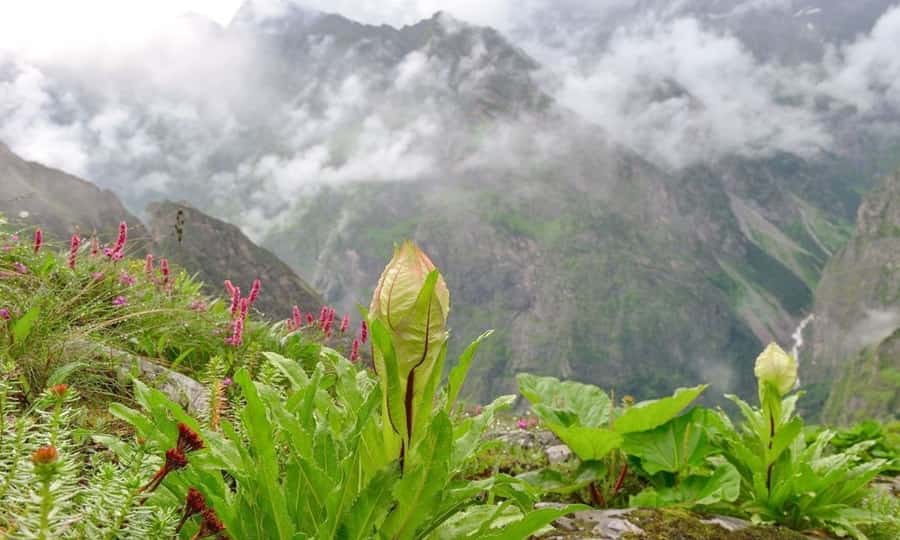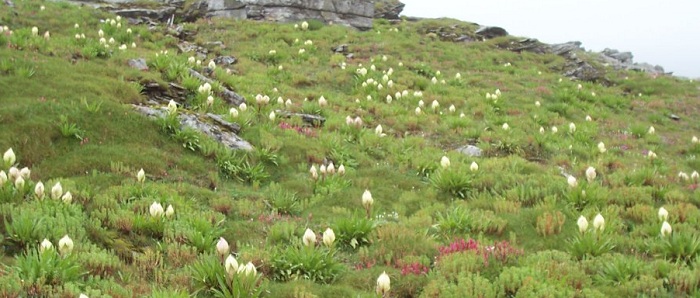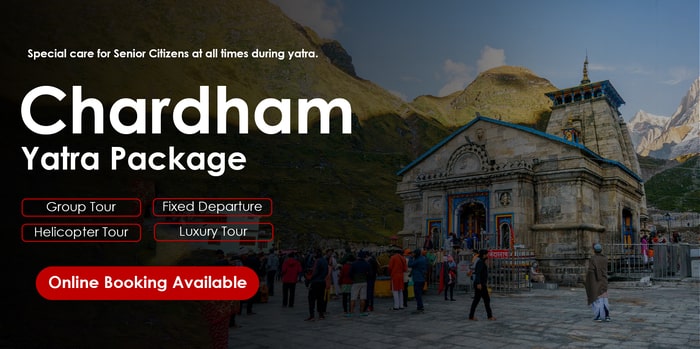Last Updated on December 24, 2024
“Flowers are sweet. They have
short, beatific lives. They offer
much pleasure. There is
nothing in the world that can be said
against them.
Sad, isn’t it, that all they can kiss
is the air.”
(Mary Oliver)
What can one say about the glory of flowers, the most ephemeral and beautiful of God’s creations? The mere sight of flowers reminds us of the sublime horizons that lie beyond the corporeal, yet exist alongside us. What can one then say of the glory of a flower whose very name speaks of its exaltation as the supreme — Brahma Kamal? The name Brahma Kamal translates to ‘The Lotus of Lord Brahma’. In pictorial depictions of Lord Brahma, the Creator of the Cosmos, he is often shown holding a specific type of lotus in his hand. This flower is said to be Brahma Kamal. Some myths even claim that the Creator of the Cosmos was born from Brahma Kamal, hence the name.
Brahma Kamal is venerated as the official flower of the state of Uttarakhand. This hardly comes as a surprise, as the state is often referred to as ‘Devbhoomi’, the land of Gods. What could be more fitting as the state flower of Devbhoomi than the favorite flower of the Gods? In fact, the flower holds significant spiritual importance in many Hindu Puranic texts.

Legends and Mythical References of Brahma Kamal
One of the frequent attributes of Brahma Kamal in Hindu texts is that it is considered ‘life-giving’. The origin of this association may lie in the legend of the birth of Lord Ganesha. When Lord Shiva gave the head of an elephant to revive his beheaded son, Lord Brahma created the Brahma Kamal so that the magically rejuvenating water held in its petals could be sprinkled on Ganesha. This restored him to life, and the flower was praised by the devas as being ‘life-giving’. It is interesting to note that both modern science and ancient medicinal practices associate many healing properties with the flower.
Another instance where Brahma Kamal is mentioned is in the Ramayana. The miraculous healing of Lakshmana after he was gravely injured in the war was celebrated by the devas, who showered Brahma Kamal flowers. It is said that these flowers took root in the land now known as the Valley of Flowers, and continue to live as remnants of the heavenly miracle.
Brahma Kamal also makes a magical appearance in the Mahabharata. Draupadi, the beloved queen of the Pandavas, who followed them into their exile in the forests, was deeply troubled by the memories of her dishonoring by the Kauravas. The intense hardships of forest life also began to take their toll on her. One evening, she witnessed a sight that filled her with numinous joy: the blooming of a beautiful golden lotus — the very Brahma Kamal. The blooming of Brahma Kamal is a rare occurrence; it is believed that those who witness this divine event will have their wishes fulfilled. Brahma Kamal blooms at night and stays open for only a few hours.
Some even say that Brahma Kamal blooms only once every 14 years.
Some Biological Facts of Brahmakamal
Brahma Kamal is endemic to the high-altitude regions of the Himalayas. The flower is known as ‘the king of Himalayan flowers’. It grows in mountainous regions at altitudes between 3,000 and 4,800 meters. Its botanical name is Saussurea obvallata, and it belongs to the Asteraceae family. The plant grows up to a height of 1 foot (0.3 meters). The blooming season of the flower is during the mid-monsoon months of July and August. Brahma Kamal plants become visible between April and October. Enclosed by greenish-yellow bracts, the purple flower heads of Brahma Kamal stay hidden and protected from the cold Himalayan environment. Some of the names used by locals for this flower include Kon, Kapfu, and of course, Brahma Kamal.

Confusion of Brahmakamal with Another Flower
One might come across instances where people claim to have grown Brahma Kamal in their homes and witnessed its rare blooming at night. However, these flowers are most likely another species called orchid cactus (Epiphyllum oxypetalum), a beautiful flower known for its rare nighttime blooming. These, however, are not Brahma Kamal flowers.
Religious Importance of Brahmakamal
Brahma Kamal is abundant in the Himalayan regions, including the Valley of Flowers, Kedarnath, Tungnath, Satopanth Lake, and Srikhand Mahadev. These sacred flowers are offered at the shrines of Kedarnath and Badrinath. Especially during the festival of Nanda Ashtami, which occurs around September and October, Brahma Kamal flowers are offered in large numbers.
The flowers offered to the deity are distributed as Prasad among the devotees. One can also see the offering of Brahma Kamal flowers at the sacred shrines of Yamunotri, Gangotri, Badrinath, and Kedarnath.
Brahmakamal Facing Extinction
Human intervention has disrupted the delicate balance of many ecosystems. Excessive harvesting of Brahma Kamal flowers has put its survival at risk in recent years. Some regions where Brahma Kamal flowers are protected include the Nanda Devi Biosphere, Askot Wildlife Sanctuary, and Kedarnath Wildlife Sanctuary.
Due to the high prices Brahma Kamal flowers fetch on the black market because of their medicinal properties, they are being plucked and traded by locals. If this trend continues, where the flowers are not allowed to grow naturally at high altitudes, only their mythical references will remain on earth. The rampant plucking of these flowers for religious purposes and their value in medicinal sciences, without allowing them to undergo natural pollination, has led to a 70% decline in their numbers. This was revealed by a study conducted by the Wildlife Institute of India in the Panch Kedar region. Various remedial measures have been suggested, including starting a recovery program and cultivating the plant species in naturally confined spaces in higher altitude regions such as Chamoli, Uttarkashi, Pithoragarh, and Bageshwar.





 Call
Call WhatsApp
WhatsApp Enquiry
Enquiry
wow! the flower is precious and glorified but I exactly didn’t know the reasons for it. Wonderful information. Thanks for sharing.
Any plant nurseries nearby sell the plant seedlings?
I am from Kolkata, please let me/us know? Whether Brahma kamal will be blooming in indore in our city, Kolkata. THANKS,